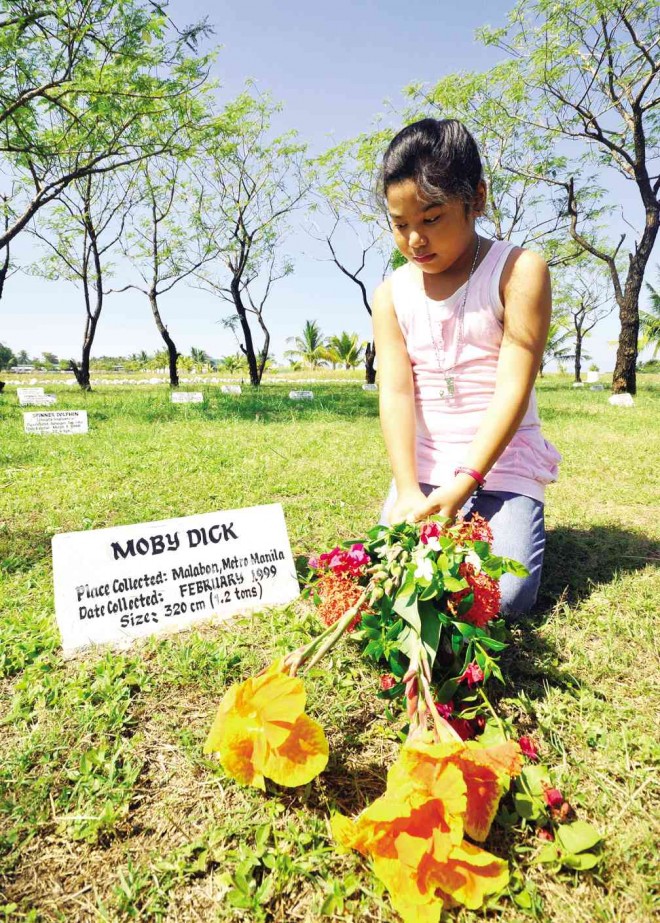BFAR builds more fish cemeteries

A GIRL offers flowers at the tomb of a whale buried in the fish cemetery of the National Integrated Fisheries Technology Development Center in Dagupan City. The cemetery holds the remains of 24 species of dolphin, whale and sea turtle. WILLIE LOMIBAO/CONTRIBUTOR
DAGUPAN CITY, Philippines—It is not only in this city in Pangasinan province where a fish can rest in peace, as fish cemeteries have also been built in the provinces of Palawan and Zamboanga del Norte, an official of the National Integrated Fisheries Technology Development Center (NIFTDC) said.
“The idea of having a resting place for endangered aquatic animals has spread and I’m happy about it,” said NIFTDC chief Dr. Westly Rosario, who built the country’s first fish cemetery inside the 24-hectare NIFTDC compound in Barangay (village) Bonuan Binloc in 1999.
The center is under the Bureau of Fisheries and Aquatic Resources (BFAR).
At least 24 different species of dolphin, whale and sea turtle are buried there.
The last aquatic animal buried was a 70-kilogram green sea turtle (Chelona mydas) that was found on the coastline of Barangay Nibaliw in San Fabian town on Sept. 23, 2012.
“There have not been burials lately,” Rosario said. “Maybe because it is quite expensive if they still have to bring the dead sea mammals and bury them.”
Last week, a 10-ton sperm whale (Physeter macrocephalus) that fishermen found dying near the shore of San Fernando City in La Union province was buried in the area rather than taking it to the fish cemetery here, which is 76 kilometers away.
In 2008, Rosario said a 3-ton Minke whale (Balaenoptera acutorostrata) that was found dead in Manila Bay had to be transported using a rented trailer truck for burial here.
Also in that year, a 30-ton sperm whale was found dead and floating in the waters off Zamboanga City. The sea mammal had to be buried at the fish cemetery of Zamboanga State College of Marine Sciences and Technology in that city.
Rosario said it would be better if local governments or other agencies could build fish cemeteries in their areas.
The Philippines is unique because of its fish cemeteries, he said. “Well, in the many countries that I’ve visited, they have pet cemeteries but not fish cemeteries.”
He said he thought of setting up the 1,000-square-meter fish cemetery here in February 1999 when a 1.2-ton sperm whale that was found dead in Malabon City in Metro Manila arrived.
“We thought of putting up the fish cemetery to put across the message that there was an urgent need to extend maximum protection to all endangered fish species,” Rosario said.
Before All Saints’ Day this year, workers at the NIFTDC will spruce up the fish cemetery. They will repaint the aquatic animals’ tombstones, where their nicknames, species, weights and other measurements are listed for visitors and tourists to see.